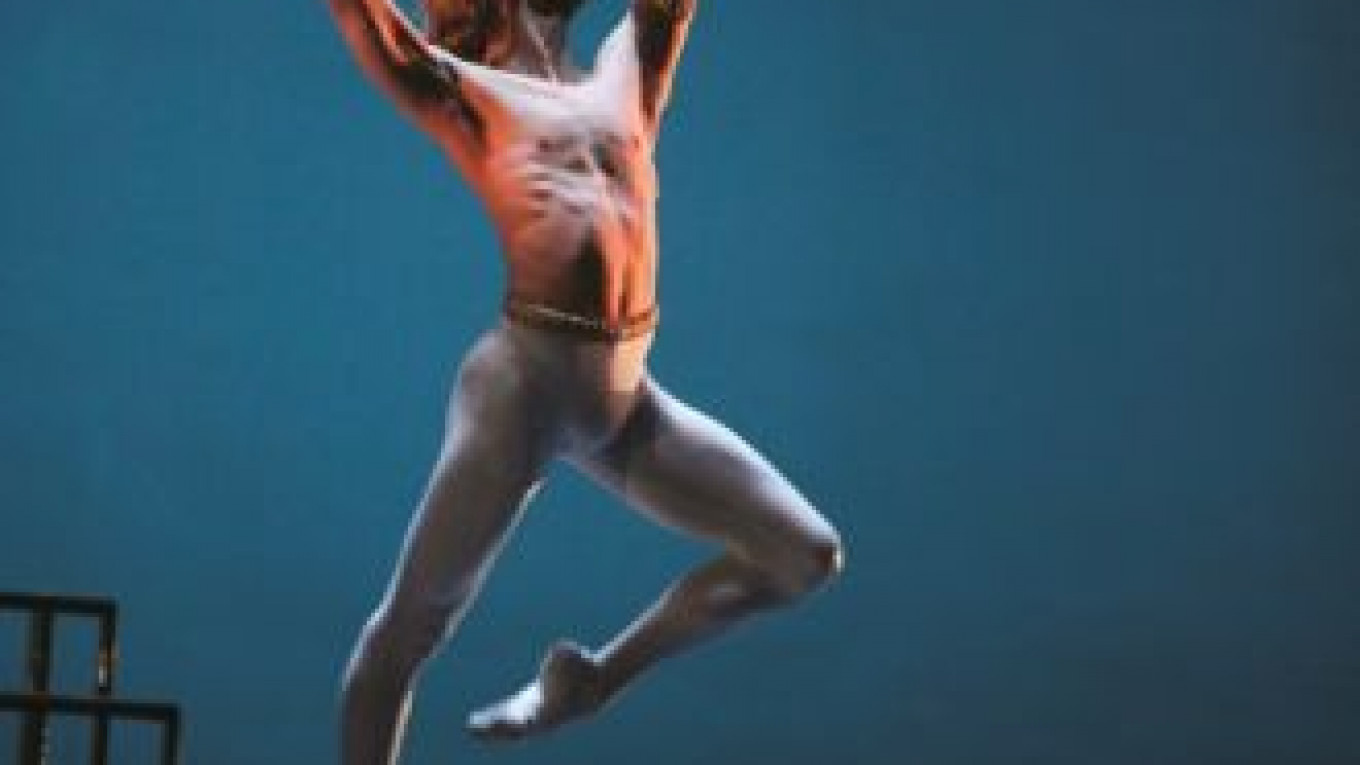This season, after an interval of four years, the Stanislavsky and Nemirovich-Danchenko Musical Theater has revived its long-standing festival known as DanceInversion, bringing a feast of superb companies and dancers to provide nourishment to what seems a steadily increasing audience in Moscow for contemporary dance.
The festival started off in June with a set of soul-stirring performances by America’s Alvin Ailey Dance Theater and resumed last week with appearances by one of France’s radically inclined dance troupes, the Paris-based company of choreographers Jose Montalvo and Dominique Hervieu.
“Orphee” by Montalvo and Hervieu amounted to a retelling of the familiar mythical tale of Orpheus and Eurydice, set in modern-day Paris, and proved a wonderfully eclectic mix of classical ballet, pantomime, hip-hop and circus acts, combined with an amazing display of video art and music ranging from the 17th to the 21st century. The multiracial cast of eight dancers and seven musicians (who also took part in the dance) played “Orphee” with enormous panache. And though, at first acquaintance, it was often hard to discern the underlying story, the show nevertheless added up to a very moving and thoroughly exhilarating experience.
DanceInversion restarts on Wednesday with the first of three evenings featuring the latest installment of “Kings of the Dance,” which earlier visited Moscow in 2007 and 2009, and picks up again next month with Flamenco Festival (Nov. 10-12), followed by a program featuring Mariinsky prima ballerina Diana Vishneva (Nov. 16-18) and appearances by the Polish Dance Theater (Dec. 6-7) and Netherlands Dance Theater II (Dec. 11-13).
The dance contingent of this year’s “King of the Dance, Opus 3,” consists of the Bolshoi Theater’s Ivan Vasilyev, plus four dancers already well known to Moscow audiences — Marcelo Gomes and David Hallberg from American Ballet Theater, Denis Matviyenko, briefly of the Bolshoi and now a star of the Mariinsky, and Leonid Sarafanov, who last season left the Mariinsky to join its St. Petersburg rival, the Mikhailovsky Theater — together with Guillaume Cote, from the National Ballet of Canada.
South Dakota-born Hallberg, 29, made headlines the week before last when it became known that he had accepted an offer to enter the ranks of the Bolshoi, the first foreign dancer in living memory and the first American ever to become a lead member of the company. Hallberg fills an important gap at the Bolshoi, where male dancers of similar elegance and virtuosity have lately been missing. For his debut as a Bolshoi premier danseur he is due to partner Natalya Osipova in “Giselle” and go on to partner Svetlana Zakharova — now returned to the theater following a year of maternity leave — in other ballet classics. At least for the present, Hallberg plans to divide his time between the Bolshoi and American Ballet Theater, where he has been a principal dancer since 2005.
Besides presenting a star-studded array of dancers, “Kings of the Dance, Opus 3” will put on parade the work of no less than seven choreographers, including Spaniard Nacho Duato and Finn Jorma Elo, both of whom have made highly acclaimed additions to the Stanislavsky and Nemirovich-Danchenko’s own ballet repertoire, Italian Mauro Bigonzetti, German Marco Goecke, Romanian Edward Clug, Nigerian-German Patrick De Bana and dancer Marcelo Gomes, who hails originally from Brazil.
Flamenco Festival was founded 10 years ago and has since played to more than a million spectators throughout the world. Each of its three nights brings to the stage a different distinguished flamenco company from Spain.
The immensely popular Vishneva is due to appear in a program titled “Diana Vishneva: Dialogues,” which includes the world premiere of a ballet called “Dialogue” by Hamburg-based American John Neumeier, whose “The Seagull” and “The Little Mermaid” are major adornments to the Stanislavsky and Nemirovich-Danchenko’s repertoire, as well as ballets by the legendary American choreographer Martha Graham (“Errand into the Maze,” dating from 1947) and by the husband-and-wife choreographic team of Paul Lightfoot and Sol Leon (“Subject to Change,” created in 2003 for the Netherlands Dance Theater).
The Poznan-based Polish Dance Theater (which plays by way of exception at the Russian Youth Theater) brings to Moscow two full-length ballets, “Alexanderplatz,” a work by Polish choreographer Paulina Wycichowska inspired by the 20th anniversary of the fall of the Berlin Wall, and “Minus 2,” an abstract ballet by Israeli choreographer Ohad Naharin.
DanceInversion comes to an end with a triple bill by Netherlands Dance Theater II, the company’s troupe of younger dancers, which includes more choreography of Lightfoot and Leon plus works by the revered Czech-born Jiri Kylian and by Swedish choreographer Alexander Ekman.
“Kings of the Dance, Opus 3” (Koroli tantsa, Opus 3) plays Wednesday, Thursday and Friday at 7 p.m. at the Stanislavsky and Nemirovich-Danchenko Musical Theater, located at 17 Ulitsa Bolshaya Dmitrovka. Metro Chekhovskaya, Pushkinskaya. Tel. 629-2835.
A Message from The Moscow Times:
Dear readers,
We are facing unprecedented challenges. Russia's Prosecutor General's Office has designated The Moscow Times as an "undesirable" organization, criminalizing our work and putting our staff at risk of prosecution. This follows our earlier unjust labeling as a "foreign agent."
These actions are direct attempts to silence independent journalism in Russia. The authorities claim our work "discredits the decisions of the Russian leadership." We see things differently: we strive to provide accurate, unbiased reporting on Russia.
We, the journalists of The Moscow Times, refuse to be silenced. But to continue our work, we need your help.
Your support, no matter how small, makes a world of difference. If you can, please support us monthly starting from just $2. It's quick to set up, and every contribution makes a significant impact.
By supporting The Moscow Times, you're defending open, independent journalism in the face of repression. Thank you for standing with us.
Remind me later.






